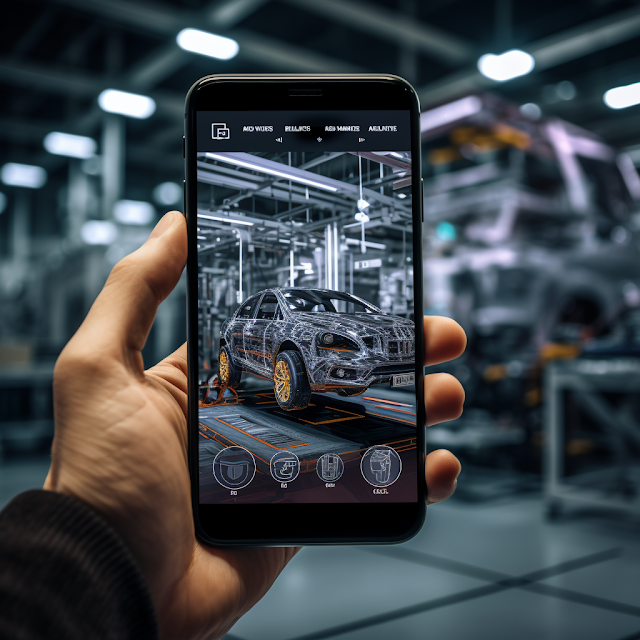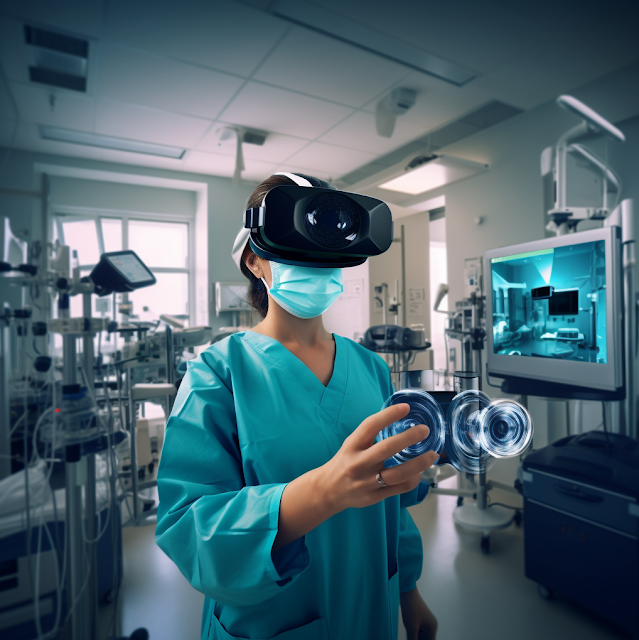Augmented Reality in the Automotive Industry: Driving the Future
The automotive industry has a rich history of technological advancements, from the invention of the automobile itself to the development of electric vehicles and autonomous driving. In recent years, another groundbreaking innovation has emerged to revolutionize the driving experience – augmented reality (AR). Augmented reality in the automotive sector is poised to change the way we interact with our vehicles, enhancing safety, convenience, and the overall driving experience. In this blog post, we'll explore the exciting applications, benefits, and challenges of AR in the automotive industry.
What is Augmented Reality?
Augmented reality (AR) is a technology that superimposes digital information, such as graphics, text, or 3D models, onto the real-world environment. Unlike virtual reality, which creates entirely immersive digital experiences, AR enhances the real world by adding digital elements to it. AR experiences can be accessed through various devices, including heads-up displays (HUDs), windshields, and mobile apps.
Applications of Augmented Reality in the Automotive Industry
Head-Up Displays (HUDs): AR-equipped HUDs project critical driving information, such as speed, navigation directions, and safety warnings, onto the windshield. This allows drivers to access vital information without taking their eyes off the road.
Navigation and Wayfinding: AR navigation systems can overlay route guidance, points of interest, and real-time traffic information onto the windshield, simplifying navigation and improving situational awareness.
Parking Assistance: AR parking systems provide visual aids, such as guidelines and proximity warnings, to assist drivers in parking maneuvers, making parking easier and reducing the risk of accidents.
Vehicle Maintenance: AR applications can help diagnose and identify vehicle maintenance issues by overlaying information on engine components, wiring diagrams, and service procedures when the user points their device at the engine bay.
Augmented Owner's Manuals: Manufacturers can provide augmented reality owner's manuals that assist owners in understanding vehicle features, maintenance, and troubleshooting.
Benefits of Augmented Reality in the Automotive Industry
Enhanced Safety: By keeping critical information in the driver's line of sight, AR HUDs improve safety by reducing distractions and enabling better situational awareness.
Improved Navigation: AR navigation systems make it easier to follow directions and locate points of interest, enhancing the overall driving experience.
Simplified Parking: Parking assistance systems powered by AR reduce the stress and complexity of parking maneuvers, especially in tight spaces.
Enhanced User Experience: AR provides an intuitive and interactive way for drivers to access information, improving the overall user experience.
Reduced Maintenance Costs: AR-assisted maintenance and diagnostics can help drivers and mechanics quickly identify and address issues, potentially reducing maintenance costs.
Challenges and Considerations
Despite its promise, augmented reality in the automotive industry faces several challenges:
Cost: Implementing AR technology can be costly, especially for lower-end vehicles, which may limit widespread adoption.
Driver Distraction: While designed to enhance safety, poorly designed AR interfaces or information overload could potentially lead to distraction if not carefully managed.
Data Privacy: AR systems that collect and use data, such as location and driving behavior, must prioritize user privacy and adhere to data protection regulations.
Technology Integration: Seamless integration of AR systems into vehicles requires collaboration between automakers and technology providers, which can be complex.
Conclusion
Augmented reality is driving innovation in the automotive industry, promising safer, more convenient, and immersive driving experiences. From HUDs that display critical information on windshields to advanced navigation and parking assistance, AR is enhancing the way we interact with our vehicles. While challenges exist, the potential benefits in terms of safety, convenience, and user experience make it a technology worth pursuing. As the automotive industry continues to evolve, augmented reality is set to play a significant role in shaping the future of driving. The road ahead is augmented, and the possibilities are boundless.






